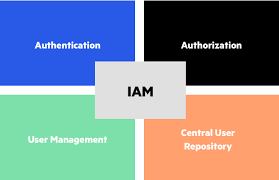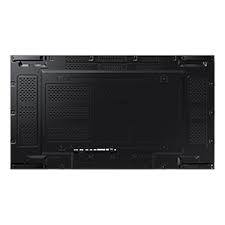Access Management: Enhancing Security and Efficiency
In today’s fast-paced world, where technology is advancing at an exponential rate, the need for effective access management has become paramount. Whether it’s a small business or a large organization, controlling access to physical spaces and digital resources is crucial for maintaining security, protecting sensitive information, and ensuring operational efficiency.
Access management refers to the process of regulating and controlling who has permission to enter specific areas or use certain resources within an organization. It involves implementing policies, procedures, and technologies that authenticate individuals’ identities and grant appropriate levels of access based on their roles and responsibilities.
One of the key benefits of access management is enhanced security. By implementing robust access control systems, organizations can prevent unauthorized entry into their premises, protecting valuable assets and sensitive data. Access management systems often utilize various authentication methods such as passwords, PINs, biometrics (fingerprint or facial recognition), or smart cards to verify individuals’ identities before granting access.
Moreover, access management helps organizations comply with industry regulations and standards related to data privacy and security. By ensuring that only authorized personnel have access to confidential information or restricted areas, organizations can mitigate the risk of data breaches or unauthorized disclosures.
Efficient access management also plays a vital role in streamlining operations within an organization. By granting employees appropriate levels of access to relevant resources and systems, productivity can be maximized while minimizing unnecessary delays or bottlenecks. For example, employees can quickly retrieve essential files or documents if they have the necessary permissions without having to rely on others for assistance.
In addition to physical access control systems like key cards or biometric scanners at entry points, modern organizations are increasingly adopting advanced technologies such as cloud-based identity and access management (IAM) solutions. These IAM solutions enable centralized control over user identities across multiple platforms and applications. They offer features like single sign-on (SSO), multi-factor authentication (MFA), role-based access control (RBAC), and user provisioning, allowing organizations to manage access efficiently and securely across their entire digital ecosystem.
Access management is not limited to internal operations. It also extends to external stakeholders such as customers, partners, or vendors. Organizations can implement customer identity and access management (CIAM) solutions to provide secure and personalized access to their digital platforms or services. CIAM solutions enable organizations to authenticate, authorize, and manage customer identities while ensuring a seamless user experience.
In conclusion, access management is an essential component of modern-day security and operational efficiency. By implementing robust access control systems and leveraging advanced IAM solutions, organizations can protect their assets, comply with regulations, streamline operations, and provide secure access to both internal and external stakeholders. As technology continues to evolve, it is crucial for organizations to stay proactive in adopting the latest access management practices to safeguard their resources effectively.
Frequently Asked Questions About Access Management: Explained and Answered
- What is meant by access management?
- Why do we need access management?
- What is an example of access management?
- What is the job description of access management?
What is meant by access management?
Access management refers to the process of regulating and controlling who has permission to enter specific areas or use certain resources within an organization. It involves implementing policies, procedures, and technologies that authenticate individuals’ identities and grant appropriate levels of access based on their roles and responsibilities.
Access management can encompass both physical access control and digital access control. Physical access control involves mechanisms such as key cards, biometric scanners, or security guards to restrict entry into buildings, rooms, or other physical spaces. Digital access control, on the other hand, involves managing user authentication and authorization to digital resources such as computer systems, databases, networks, or online platforms.
The goal of access management is to ensure that only authorized individuals can gain entry or utilize resources within an organization. By implementing effective access management practices, organizations can enhance security by preventing unauthorized access to sensitive areas or information. Access management also helps organizations comply with industry regulations related to data privacy and security.
Access management systems often employ various authentication methods such as passwords, PINs, biometrics (fingerprint or facial recognition), smart cards, or two-factor authentication (2FA) for verifying individuals’ identities before granting them access. Additionally, role-based access control (RBAC) is commonly used to assign specific permissions based on an individual’s job function or responsibilities.
Modern organizations are increasingly adopting advanced technologies like cloud-based identity and access management (IAM) solutions. These IAM solutions enable centralized control over user identities across multiple platforms and applications. They offer features like single sign-on (SSO), multi-factor authentication (MFA), user provisioning, and role-based access control (RBAC), allowing organizations to manage access efficiently and securely across their entire digital ecosystem.
Overall, access management plays a critical role in maintaining security and operational efficiency within organizations by controlling who can enter physical spaces or use digital resources. It helps protect valuable assets, prevent data breaches or unauthorized disclosures, streamline operations by granting appropriate permissions to employees, and provide secure access to external stakeholders such as customers or partners.
Why do we need access management?
Access management is essential for several reasons:
- Security: Access management helps protect valuable assets, sensitive information, and facilities from unauthorized access. By implementing access control systems, organizations can ensure that only authorized individuals have entry to specific areas or resources, reducing the risk of theft, data breaches, or other security incidents.
- Data Privacy and Compliance: Many industries have regulations and standards in place to protect data privacy and ensure compliance. Access management helps organizations meet these requirements by controlling who can access sensitive data or systems containing personal information. It ensures that only authorized personnel have access to confidential data, reducing the risk of data breaches and potential legal consequences.
- Operational Efficiency: Efficient access management streamlines operations within an organization. By granting employees appropriate levels of access to relevant resources and systems based on their roles and responsibilities, productivity is enhanced. Employees can quickly access the necessary tools and information without unnecessary delays or bottlenecks, improving overall efficiency.
- Risk Mitigation: Access management mitigates risks associated with unauthorized access or misuse of resources. By implementing strong authentication methods such as passwords, biometrics, or smart cards, organizations reduce the likelihood of unauthorized individuals gaining entry to restricted areas or using critical systems or data.
- Accountability: Access management enables organizations to track and monitor user activities within their systems or facilities. This accountability helps identify any suspicious behavior or potential security breaches by providing a clear audit trail of who accessed what resources at specific times.
- Customer Trust: For businesses that provide digital services or platforms, customer trust is crucial. Implementing robust customer identity and access management (CIAM) solutions ensures secure and personalized access for customers while protecting their sensitive information. This builds trust with customers who rely on organizations to keep their data safe.
- Scalability: As organizations grow or change over time, managing access becomes increasingly complex without proper systems in place. Access management solutions provide scalability by allowing seamless control over user access as new employees join, roles change, or partnerships evolve.
In summary, access management is vital for maintaining security, protecting data privacy, ensuring compliance, enhancing operational efficiency, mitigating risks, fostering accountability, building customer trust, and enabling scalability. It is an essential practice for organizations in today’s digital age.
What is an example of access management?
An example of access management is the use of key card systems in an office building. Employees are issued key cards that they must present to a card reader at the entrance of the building or specific areas within the building. The card reader authenticates the employee’s identity and grants access only to those with valid key cards. This system ensures that only authorized personnel can enter restricted areas, such as server rooms or executive offices, while maintaining a record of who accessed those areas and when. Access management systems can also be integrated with other security measures, such as video surveillance or alarm systems, to provide a comprehensive security solution.
What is the job description of access management?
The job description of an access management professional typically includes the following responsibilities:
- Implementing Access Control Systems: Access management professionals are responsible for implementing and maintaining access control systems, both physical and digital. This includes installing and configuring hardware devices such as key card readers, biometric scanners, or smart locks, as well as setting up software-based access controls for digital resources.
- Defining Access Policies: They develop and enforce access policies that determine who has permission to enter specific areas or use certain resources within an organization. This involves collaborating with stakeholders to understand their requirements and translating them into clear and effective access control rules.
- User Provisioning: Access management professionals are responsible for managing user accounts and provisioning appropriate access rights based on individuals’ roles and responsibilities within the organization. They create new user accounts, assign permissions, modify access privileges as needed, and deactivate or remove accounts when necessary.
- Authentication and Authorization: They implement authentication methods to verify individuals’ identities before granting access. This can include password-based authentication, multi-factor authentication (MFA), biometric authentication (fingerprint or facial recognition), or smart card-based authentication. They also ensure proper authorization by assigning users to appropriate user groups or roles with predefined access privileges.
- Monitoring Access Activities: Access management professionals monitor and audit access activities to detect any suspicious behavior or unauthorized attempts to gain entry or access sensitive information. They utilize logging systems, surveillance cameras, or security information and event management (SIEM) tools to track and analyze access logs for potential security incidents.
- Compliance Management: They ensure that the organization’s access management practices align with industry regulations and standards related to data privacy and security. This involves staying updated on relevant laws such as GDPR or HIPAA and implementing necessary controls to protect sensitive data from unauthorized disclosure.
- Training and Support: Access management professionals provide training sessions or documentation to educate employees on proper access control practices, password hygiene, and data security awareness. They also offer technical support to troubleshoot access-related issues and assist users in navigating access control systems.
- Collaboration and Communication: They collaborate with cross-functional teams such as IT, security, HR, and facilities management to ensure seamless integration of access management practices across the organization. Effective communication skills are essential for coordinating access-related activities, addressing concerns, and implementing changes.
- Continuous Improvement: Access management professionals continuously evaluate and improve access control processes and technologies to adapt to evolving threats and industry best practices. They stay informed about the latest trends in access management, attend relevant training or conferences, and assess the effectiveness of existing controls to enhance security and efficiency.
Overall, the job of an access management professional involves implementing robust access control systems, defining policies, managing user accounts, monitoring access activities, ensuring compliance with regulations, providing support and training to users, and continuously improving access management practices within an organization.




